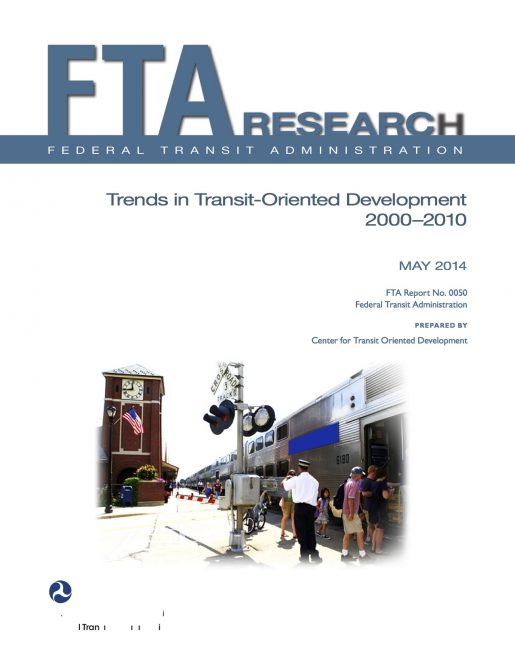
Authors
Publication Date
May 1, 2014
Tags
Resource Type
Trends in Transit-Oriented Development, 2000–2010
Abstract: After decades of decline, public transportation ridership grew 36 percent from 1995 through 2008, almost three times the growth rate of the U.S. population (14%) and substantially more than the growth for vehicle miles of travel on our nation’s streets and highways (21%). This report analyzes the trends in transit regions and transit-oriented developments (TOD) from 2000 to 2010, illuminating changes in how and where we live, travel, and work. This analysis focuses on the regions and the ½-mile radius around station areas that existed in 2000 and 2010 and provides a snapshot of station areas in systems that came on line after 2000. Three case studies provide a closer look at how TOD impacts local communities. Investment in new fixed-guideway transit systems surged, and the number of regions with systems increased 43 percent, from 28 to 40. More households chose to live near transit in compact, mixed-use TOD communities closer to jobs and daily destinations, with easy access to transit, less reliance on automobiles, and more cost-of-living protection from volatile gas price spikes.